Pakistan: Outbreak of mysterious disease causes death of peacocks in Thar Desert of Sindh
The outbreak of mysterious disease among peacocks, found in abundance in Thar Desert of Sindh, bordering Rajasthan Desert of India, has caused death of a large number of birds, considered to be most beautiful one around the world.
Over 40 peacocks have died so far in last five days while according to local people of Thar Desert including NGO activists and media persons five to ten peacocks are perished daily by the disease. The number of dead birds could be high, as they live in bushes and trees away from human settlements, and are found perished only when the villagers go for collecting dried branches of trees for cooking food.
The peacocks are not found in whole of Thar Desert, as the arid strip of desert, stretching for over 200km from Mithi to Nagarparkar, having wild bushes and other plantation that gets greener during the rains, is the natural habitat of peacocks.
According to the wildlife department, the mysterious disease in the peacocks was discovered when 15 birds were killed in a village near Islamkot, the central part of Thar Desert. Locals said after being infected by the disease, the eyes of the peacocks swell up and within 24 hours they die. The disease has now spread to several villages.
The bones, feathers and other remains of peacock were seen scattered at different places when a team of wildlife department officials and media men visited the village Bapohar and some other villages. The team found three peacocks in critical condition, which were brought for treatment to Mithi, the headquarter town of Tharparkar District.
Lajpat Sharma, an official of wildlife department, told that the disease is curable and the condition of three birds is stable. The laboratory tests are also being carried out to ascertain the disease.
Sharma said medicines would be distributed among the villagers in Thar so that they can treat the peacocks if found suffering from disease.
Ashfaque Memon, Game Officer of wildlife department, told that the three peacocks would be released after they fully recover, as they can survive only in natural conditions.
Memon told that according a census conducted a year back, the population of peacocks in Nagar Parkar alone was around 24000 while it is also in thousands in Mithi area, as these areas are natural habitats of the birds. Another official claimed that the peacock population could be around 60, 000. However, Bharu Mal, an official of a non-government organization – Society for Conservation & Protection of Environment (SCOPE) disputed the figure given by government officials saying that the total number of peacocks could hardly be around 20, 000. According to him no census of birds or any other wildlife has been carried out by concerned authorities in last three decades.
“Peacocks and their female peahens are on the verge of extinction in Thar desert because of an illegal and unabated sale of its eggs, smuggling and loss of habitat,” he told.
Decrease in the bird`s number have in turn contributed to an increase in the snakes` population as the peacock, being its mortal enemy, keeps the reptile`s number in check.
Change in rainfall pattern, increasing population of humans and their anti-environment activities, illegal sale of eggs, smuggling, keeping the bird in unfavorable conditions like construction of buildings have contributed to an alarming decrease in the birds` population, Bharu Mal said.
“The rainy season of the year is the time for the blue peacock, found only in India, Bangladesh and Thar Desert of Sindh, to dance and their female peahens start breeding. This season, when the beautiful birds were awaiting rains, the mysterious disease has started perishing them,” he said.
According to NGO official, a large number of peacocks had also died when the heavy monsoon rains lashed the Desert in 2011. “It was unprecedented, as the Thar Desert had not experienced such heavy rains in last 80 years. Many deaths were also reported during 2003 earthquake that had jolted Gujarat State of India and Tharparkar District of Sindh. The droughts due to no rains for many years had also been affecting these birds like humans.
The wildlife officials viewed that the disease could be Nokesal Rani Khet, found in chickens, but the NGO official again rejected their claim saying there are no chicken in Desert. “The disease could be owing to non-availability of required food to the peacocks,” he opined.
Besides humans, a large-sized crow called Doddo in Thar is a fatal enemy of the birds` eggs. The crow searches out the eggs in the bushes where peahens lay them and sucks them out. The electricity has also proved harmful for the bird in Thar. When the bird lands on wires, its heavy weight causes them to lower and touch the other wire, leading to spark and eventual death of the bird.
Some greedy people also hunt the birds` eggs and sell them for Rs100 to 200 (Around 1 to 2 US dollars). The buyers usually keep the eggs under hens to get peachicks.
It is common practice to ensnare the bird and present it as a gift to friends. In most cases it is sold and taken to cities where it usually dies in unfavorable atmosphere. The wildlife department issues permit for a fee of Rs.200 (US$2) for domesticating peacock in a house but smugglers use it to take the bird to major cities and sell it illegally.
If and when a smuggler is arrested he is released after payment of Rs1, 000 (US$10) as fine. This period of the year being breeding season of peahen, and smugglers and greedy people have already started stealing its eggs from its nests.
Thar has a rich history of traditional eco-friendly traditions being followed by inhabitants for centuries. The traditions have helped keep vast pastures and jungles full of fodder for livestock round the year but now there are no more pastures because of increased human activities and prolonged droughts.
Arbab Nek Mohammad, a renowned writer and head of a social welfare association working for the protection of peacocks, said that decrease in the number of peacocks had led to an increase in snakes` population and an unusual rise in snakebite cases.





















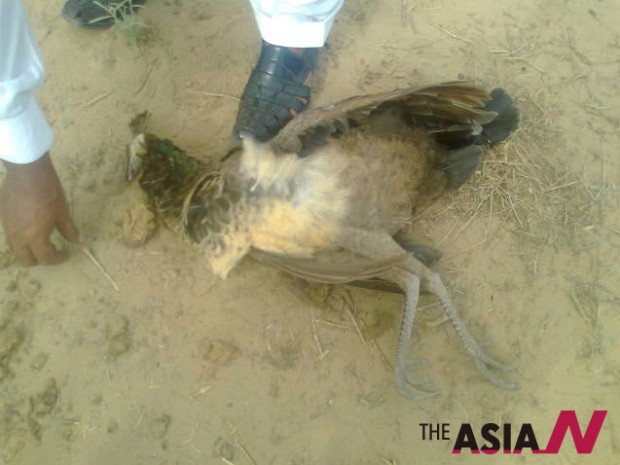

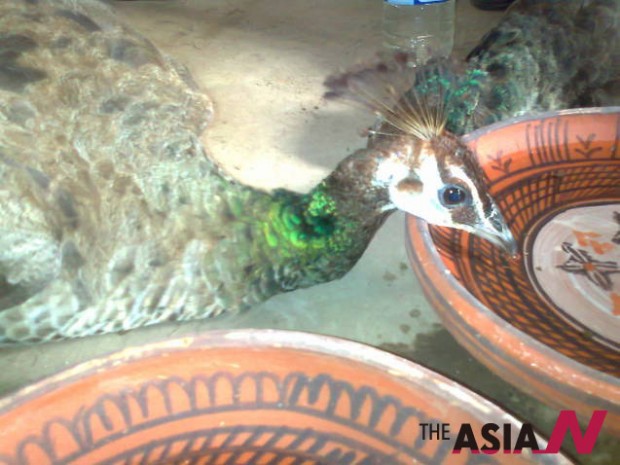
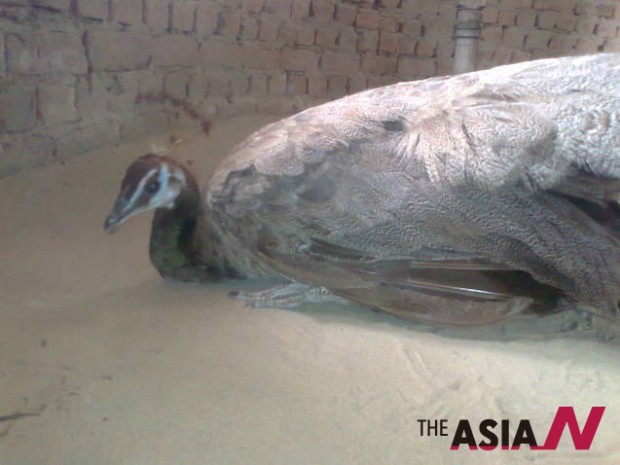
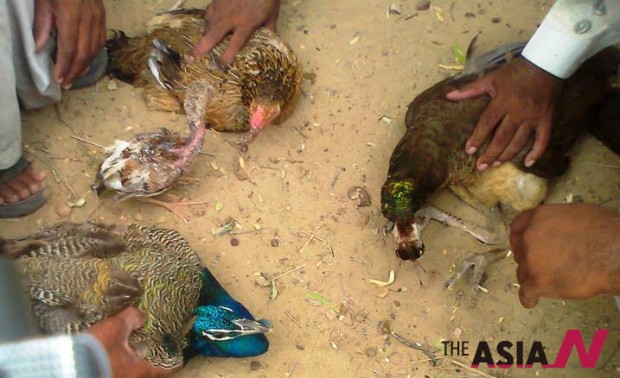
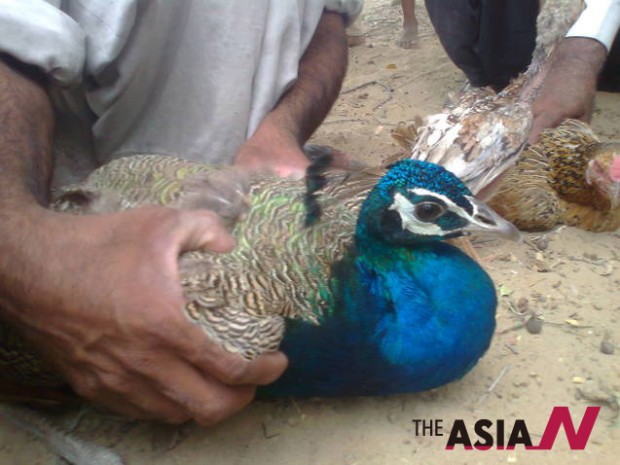
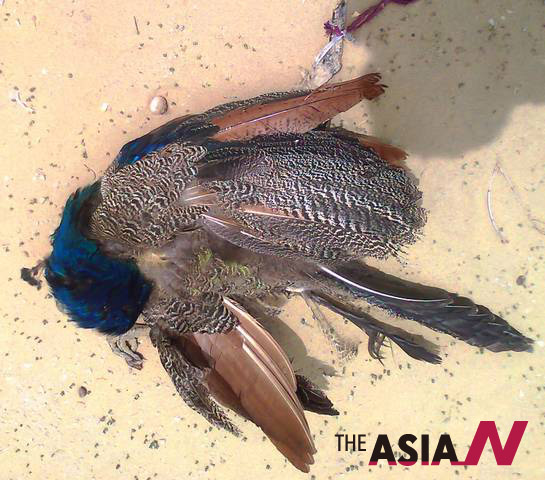
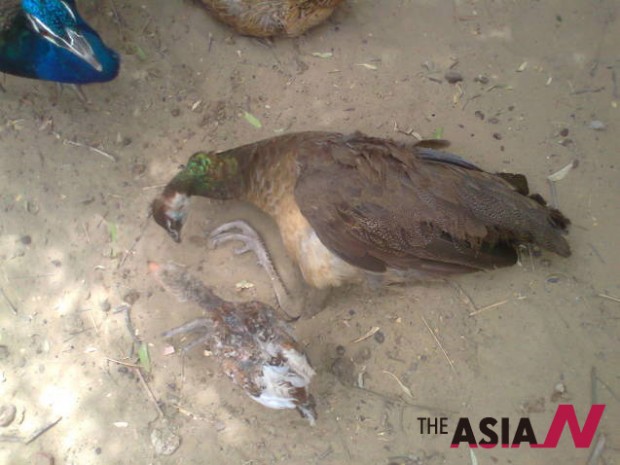
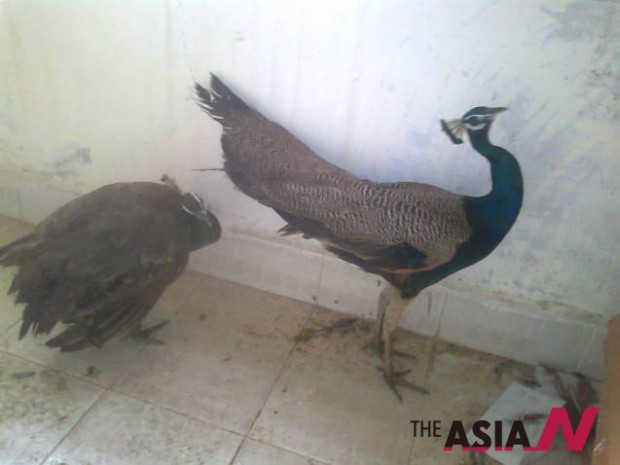











































informative write up. http://www.abarisar.com
Pingback: 파키스탄 타르 사막 “정체불명 질병, 공작새 떼죽음” « All « 아시아엔